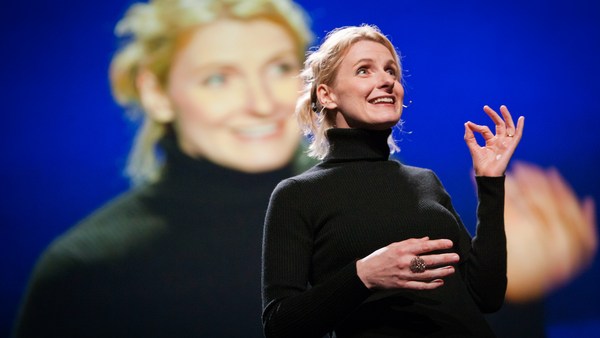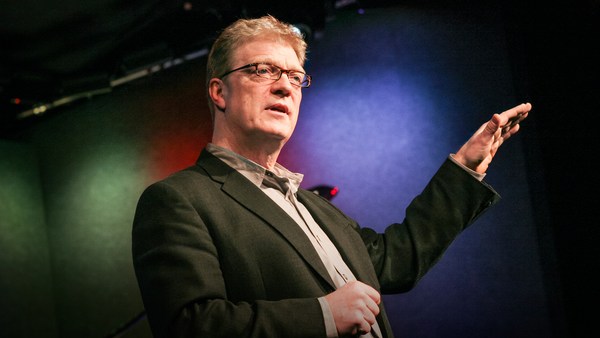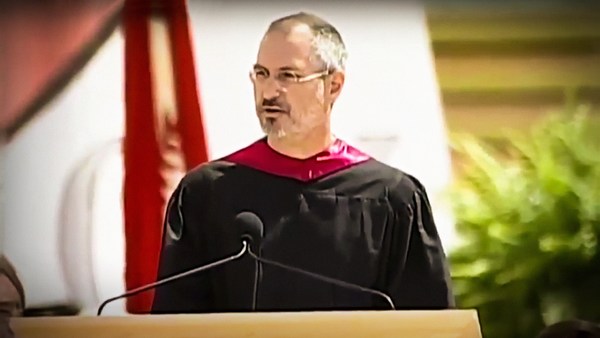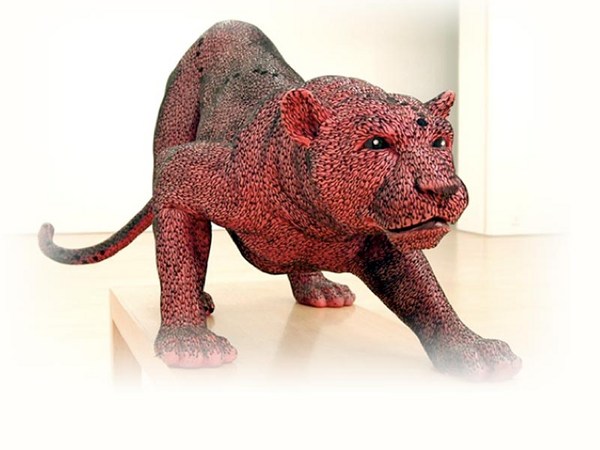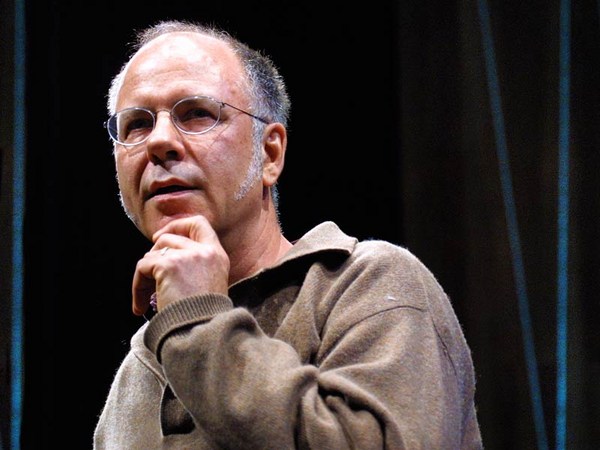This story is about taking imagination seriously. Fourteen years ago, I first encountered this ordinary material, fishnet, used the same way for centuries. Today, I'm using it to create permanent, billowing, voluptuous forms the scale of hard-edged buildings in cities around the world. I was an unlikely person to be doing this. I never studied sculpture, engineering or architecture. In fact, after college I applied to seven art schools and was rejected by all seven.
I went off on my own to become an artist, and I painted for 10 years, when I was offered a Fulbright to India. Promising to give exhibitions of paintings, I shipped my paints and arrived in Mahabalipuram. The deadline for the show arrived -- my paints didn't. I had to do something. This fishing village was famous for sculpture. So I tried bronze casting. But to make large forms was too heavy and expensive. I went for a walk on the beach, watching the fishermen bundle their nets into mounds on the sand. I'd seen it every day, but this time I saw it differently -- a new approach to sculpture, a way to make volumetric form without heavy solid materials.
My first satisfying sculpture was made in collaboration with these fishermen. It's a self-portrait titled "Wide Hips." (Laughter) We hoisted them on poles to photograph. I discovered their soft surfaces revealed every ripple of wind in constantly changing patterns. I was mesmerized. I continued studying craft traditions and collaborating with artisans, next in Lithuania with lace makers. I liked the fine detail it gave my work, but I wanted to make them larger -- to shift from being an object you look at to something you could get lost in.
Returning to India to work with those fishermen, we made a net of a million and a half hand-tied knots -- installed briefly in Madrid. Thousands of people saw it, and one of them was the urbanist Manual Sola-Morales who was redesigning the waterfront in Porto, Portugal. He asked if I could build this as a permanent piece for the city. I didn't know if I could do that and preserve my art. Durable, engineered, permanent -- those are in opposition to idiosyncratic, delicate and ephemeral.
For two years, I searched for a fiber that could survive ultraviolet rays, salt, air, pollution, and at the same time remain soft enough to move fluidly in the wind. We needed something to hold the net up out there in the middle of the traffic circle. So we raised this 45,000-pound steel ring. We had to engineer it to move gracefully in an average breeze and survive in hurricane winds. But there was no engineering software to model something porous and moving. I found a brilliant aeronautical engineer who designs sails for America's Cup racing yachts named Peter Heppel. He helped me tackle the twin challenges of precise shape and gentle movement.
I couldn't build this the way I knew because hand-tied knots weren't going to withstand a hurricane. So I developed a relationship with an industrial fishnet factory, learned the variables of their machines, and figured out a way to make lace with them. There was no language to translate this ancient, idiosyncratic handcraft into something machine operators could produce. So we had to create one. Three years and two children later, we raised this 50,000-square-foot lace net. It was hard to believe that what I had imagined was now built, permanent and had lost nothing in translation.
(Applause)
This intersection had been bland and anonymous. Now it had a sense of place. I walked underneath it for the first time. As I watched the wind's choreography unfold, I felt sheltered and, at the same time, connected to limitless sky. My life was not going to be the same. I want to create these oases of sculpture in spaces of cities around the world. I'm going to share two directions that are new in my work.
Historic Philadelphia City Hall: its plaza, I felt, needed a material for sculpture that was lighter than netting. So we experimented with tiny atomized water particles to create a dry mist that is shaped by the wind and in testing, discovered that it can be shaped by people who can interact and move through it without getting wet. I'm using this sculpture material to trace the paths of subway trains above ground in real time -- like an X-ray of the city's circulatory system unfolding.
Next challenge, the Biennial of the Americas in Denver asked, could I represent the 35 nations of the Western hemisphere and their interconnectedness in a sculpture? (Laughter) I didn't know where to begin, but I said yes. I read about the recent earthquake in Chile and the tsunami that rippled across the entire Pacific Ocean. It shifted the Earth's tectonic plates, sped up the planet's rotation and literally shortened the length of the day. So I contacted NOAA, and I asked if they'd share their data on the tsunami, and translated it into this. Its title: "1.26" refers to the number of microseconds that the Earth's day was shortened.
I couldn't build this with a steel ring, the way I knew. Its shape was too complex now. So I replaced the metal armature with a soft, fine mesh of a fiber 15 times stronger than steel. The sculpture could now be entirely soft, which made it so light it could tie in to existing buildings -- literally becoming part of the fabric of the city. There was no software that could extrude these complex net forms and model them with gravity. So we had to create it.
Then I got a call from New York City asking if I could adapt these concepts to Times Square or the High Line. This new soft structural method enables me to model these and build these sculptures at the scale of skyscrapers. They don't have funding yet, but I dream now of bringing these to cities around the world where they're most needed.
Fourteen years ago, I searched for beauty in the traditional things, in craft forms. Now I combine them with hi-tech materials and engineering to create voluptuous, billowing forms the scale of buildings. My artistic horizons continue to grow.
I'll leave you with this story. I got a call from a friend in Phoenix. An attorney in the office who'd never been interested in art, never visited the local art museum, dragged everyone she could from the building and got them outside to lie down underneath the sculpture. There they were in their business suits, laying in the grass, noticing the changing patterns of wind beside people they didn't know, sharing the rediscovery of wonder.
Thank you.
(Applause)
Thank you. Thank you. Thank you. Thank you. Thank you.
(Applause)
